Kurashiki Laboratory
Bio Innovation Center
Research & Development Center
YANMAR Technical Review
Bio Innovation Center Kurashiki Laboratory
1. Introduction
Yanmar established the Bio Innovation Center Kurashiki Laboratory ("Kurashiki Laboratory" hereafter) in August 2016 as a center for research and development to collect and accumulate agricultural knowledge and information. By combining "soft" expertise in cropping with "hard" technologies cultivated through the development of agricultural machinery and other products, and by engaging in new research and development and the implementation of solutions, the laboratory is seeking to develop techniques for producing food in ways that recycle the resources deployed so as to achieve Yanmar's brand statement of “A Sustainable Future”.
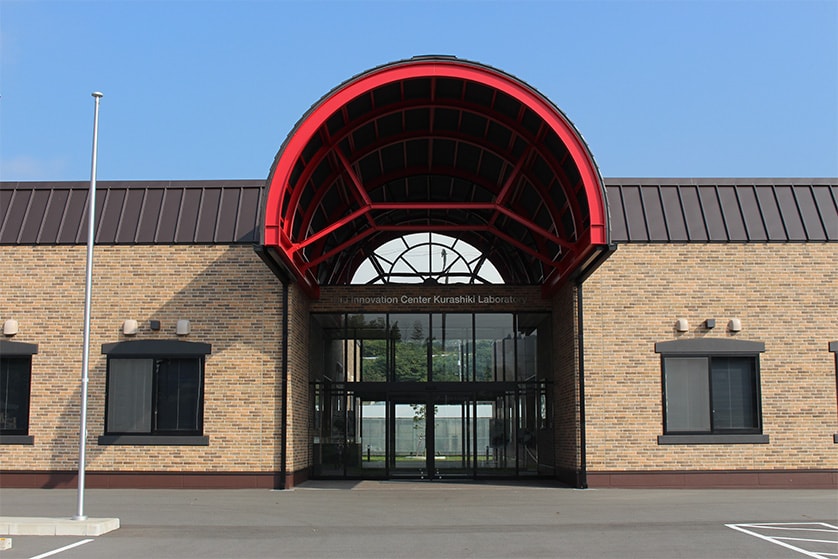
2. Facilities at Kurashiki Laboratory
The laboratory combines energy technologies with the agricultural technologies and products that Yanmar has built up over time to establish integrated food production systems, with the aims of further increasing efficiency and adding value. Examples include the installation of products from Yanmar Green System Co., Ltd. (YGS) in greenhouses and cultivation systems, gas heat pump (GHP) air conditioners from Yanmar Energy System Co., Ltd. (YES) for greenhouses, and products from Yanmar Agri Japan Co., Ltd. (YAJ) for sprinkling systems. In addition to the use of a non-destructive sorting system that utilizes spectroscopic measurement by YGS to sort harvested produce by its size and sugar content, the laboratory also performs detailed analysis of data collected during cultivation and after harvest.
Another notable example is a high-density rotating cultivation apparatus for growing strawberries. After finishing a work on a growing tray, another tray moves in turn and this allows the worker to stay on one place and manage the cultivation. Not only does this increase yield per single growing house by eliminating the need to leave space for worker access, it also reduces the physical workload for staff who are elderly or have lower-body disabilities. Demonstrating these facilities to visitors makes it easy for them to envisage the benefits of adopting such systems for themselves.
Also located on the laboratory site is the Kurashiki Center of Yanmar Symbiosis Co., Ltd. where the disabled are able to engage in produce growing and other work. Meanwhile, the laboratory is building up data on plants by analyzing the effects that these new cultivation methods have on produce in terms of everything from yields to genes.
Approximately 1,700 people were shown around the laboratory last fiscal year (about 3,000 in total to date). This is an opportunity to share views with these visitors, whose diverse backgrounds range from farmers to the staff of other research institutions. As a center for open innovation, the laboratory hopes in the future to engage in joint research with a variety of other institutions and companies.
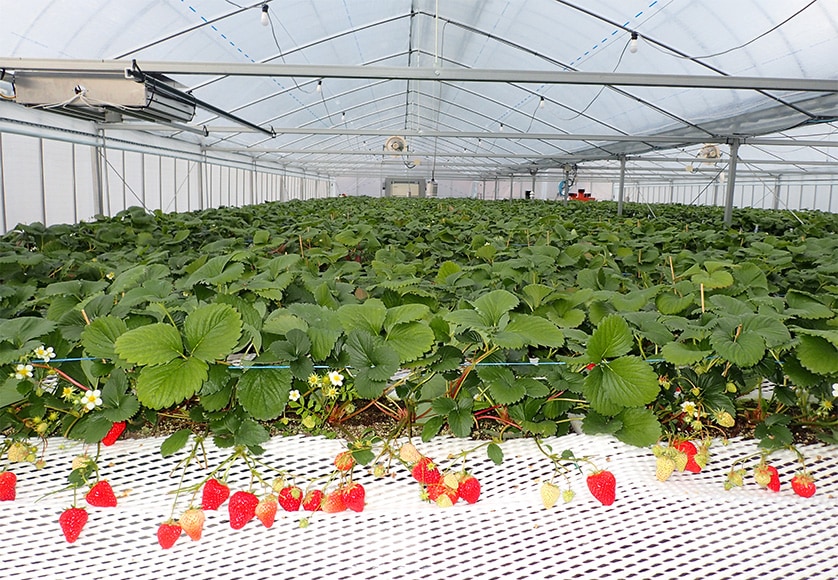
3. Activities at Kurashiki Laboratory
As shown in the diagram below, Kurashiki Laboratory is seeking to develop supply chains for producing food in ways that recycle the resources deployed. The following section describes three key areas of particular importance.

3.1. Research in Genetics and Plant Breeding (Key Area 01)
Researches involve both identifying the genetic information contained in crops and using techniques such as breeding, cell culture, and grafting to develop valuable new varieties, and also the development of the core technologies required to do this. The reasons for developing superior varieties are that they are easier for farmers to grow and that they can provide consumers with tastier and safer foods.
Advances in life science in recent years have seen rapid progress on unravelling the genetic information that determines the morphology and functions of crops. Genetic information can be thought of as the blueprint of life. Since the dawn of agriculture, humans have been making improvements to crops to make them more useful. Unfortunately, our lack of understanding of the genetic information meant that improvement took a long time and we only ever succeeded in accessing a portion of the latent potential in the crops we grew. Identifying and exploiting genetic information means obtaining these blueprints, and using them to quickly bring out as much as possible of the potential benefits that exist in a crop. The aim of the laboratory is to acquire this information and use it to overcome challenges facing producers, consumers, and other customers through both the varieties we develop and the hardware technologies used in their production.
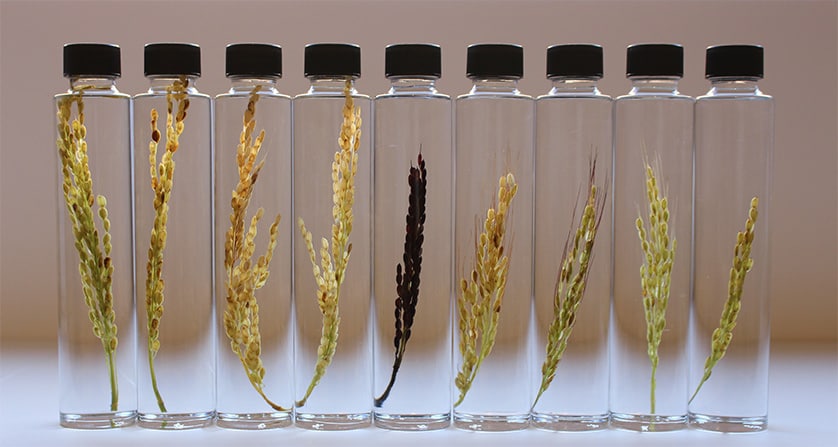
3.2. Visualization of Cultivation and Environment (Key Area 02)
Researches collect and analyse data on growth and the environment in the cultivation process with the aim of providing information on the environment and to make cultivation more efficient. It involves reverse engineering the principles behind cultivation practices that are currently based on knowledge and intuition only available to experienced farmers, thereby making it possible for anyone to work in agriculture and to identify effective cultivation practices. One such example is the use of techniques from computational flow dynamics taken from engine R&D to visualize what is happening in the atmosphere inside a greenhouse, an important factor when growing produce.
As tomato plants go through a repeated cycle of vegetative growth (putting out shoots) and reproductive growth (flowering and fruiting), year-round growing with consistent quality can be achieved by using watering and air conditioning to control the balance between the two. The establishment of techniques that link plant physiology to cultivation management and environmental control, and that utilize the knowledge so acquired, will play an important part of cultivation management in the future. The laboratory regularly conducts experimental studies based on the belief that the establishment of such techniques will lead to new solutions being made available.
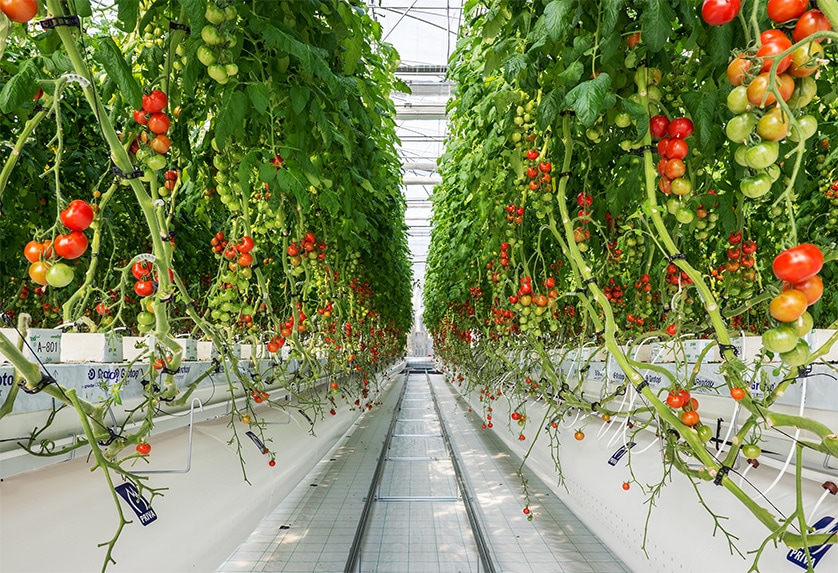
3.3. Utilization of Microorganisms (Key Ares 03)
Researches look at using microorganisms to break down the waste produced as a by-product of cultivation so that it can be used as compost or other forms of soil improvement. While the presence of organic acids and so on in unmatured plant waste spread on a growing area may often have a detrimental impact on soil and plant growth, it is becoming clear that well-matured plant waste using microorganisms in the decomposition process can minimize these effects. It is believed that recycling resources in this way to maintain the productivity and economics of the operation can lead to ways of producing food that recycle the resources available instead of relying on chemical fertilizers.
The aim of the laboratory is to devise ways of producing food that do not rely on agrichemicals by exposing the soil and plants to beneficial microorganisms with functions that include preventing the spread of pathogens or improving the plants' own resistance to disease and stress.
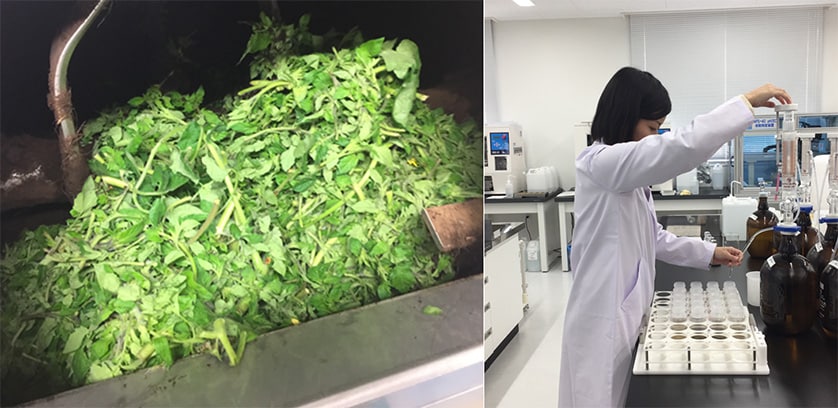
4. Conclusions
To achieve sustainable food production, Yanmar is working on the development of techniques that deliver the maximum value with the least amount of resources. In the future, Kurashiki Laboratory intends to continue working on developments that combine both "soft" and "hard" technologies so as to provide solutions for the challenges our customers faced, and to enrich people's lives for all our tomorrow.
-IMPORTANT-
The original technical report is written in Japanese.
This document was translated by Research & Development Management Division.
Author
